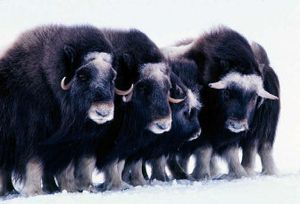Oil drilling in Arctic Refuge? 4 top reasons to say no
PUBLIC LANDS -- State and Federal scientists have spent many years and millions of dollars documenting the compelling reasons why the United States should avoid drilling for oil in the Arctic National Wildlife Refuge in Alaska.
- I visited the refuge in the early 1990s and then again a decade later to see first-hand the reasons this remote wildlife sanctuary needed protection from development.
Last week, President Obama announced, backed by decades of science, he will recommend to Congress that 12.28 million acres of the Arctic National Wildlife Refuge, including its biological heart, the coastal plain, be designated as wilderness – the highest level of protection for public lands in the United States.
In a press release, Interior Secretary Sally Jewell released a new Comprehensive Conservation Plan for managing the Arctic National Wildlife Refuge.
4 Top Reasons why wilderness is best for ANWR
(According to the National Wildlife Federation)
- With its unique wildlife, unspoiled wilderness where natural processes reign, and important habitat for hundreds of arctic wildlife species and fisheries such as arctic char, the Arctic National Wildlife Refuge is the crown jewel of the National Wildlife Refuge System and one of the most important protected areas on the planet.
- The 19.8 million acres that comprise the Arctic National Wildlife Refuge are also home to Native Alaskans, including the Inupiat and Gwich’in, and the resources of the refuge sustain these populations and protect their indigenous traditions and way of life.
- The Arctic National Wildlife Refuge is critical to wildlife with 26 polar bear dens -- 50 percent of all U.S. dens -- and a porcupine caribou herd of 160,000.
- For more than 30 years, the Arctic Refuge’s coastal plain has been at the center of an ongoing debate over oil and natural gas drilling. Designating the coastal plain and other areas of the Arctic National Wildlife Refuge as wilderness will ban oil and gas drilling, and other development in those areas vital to caribou calving.

